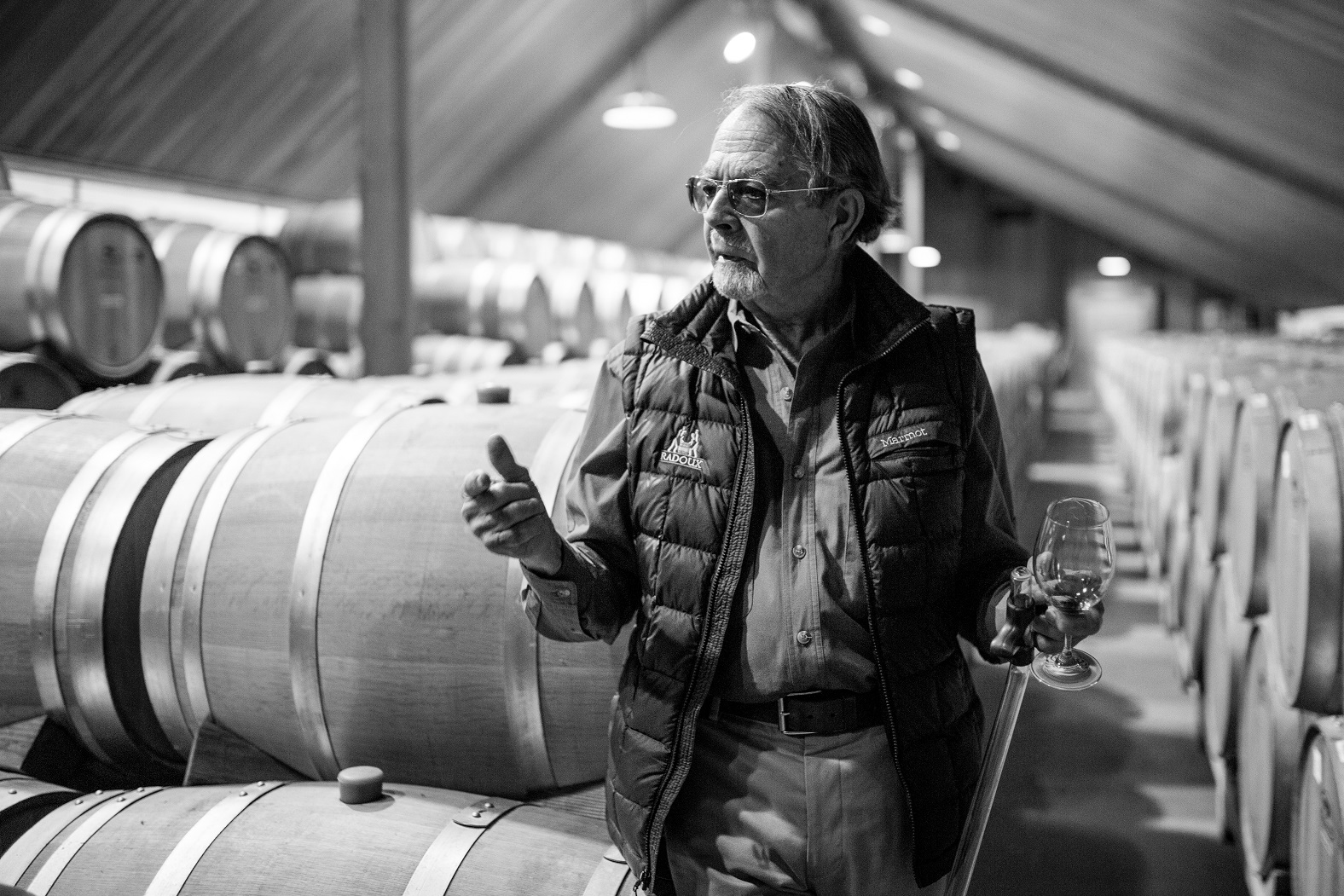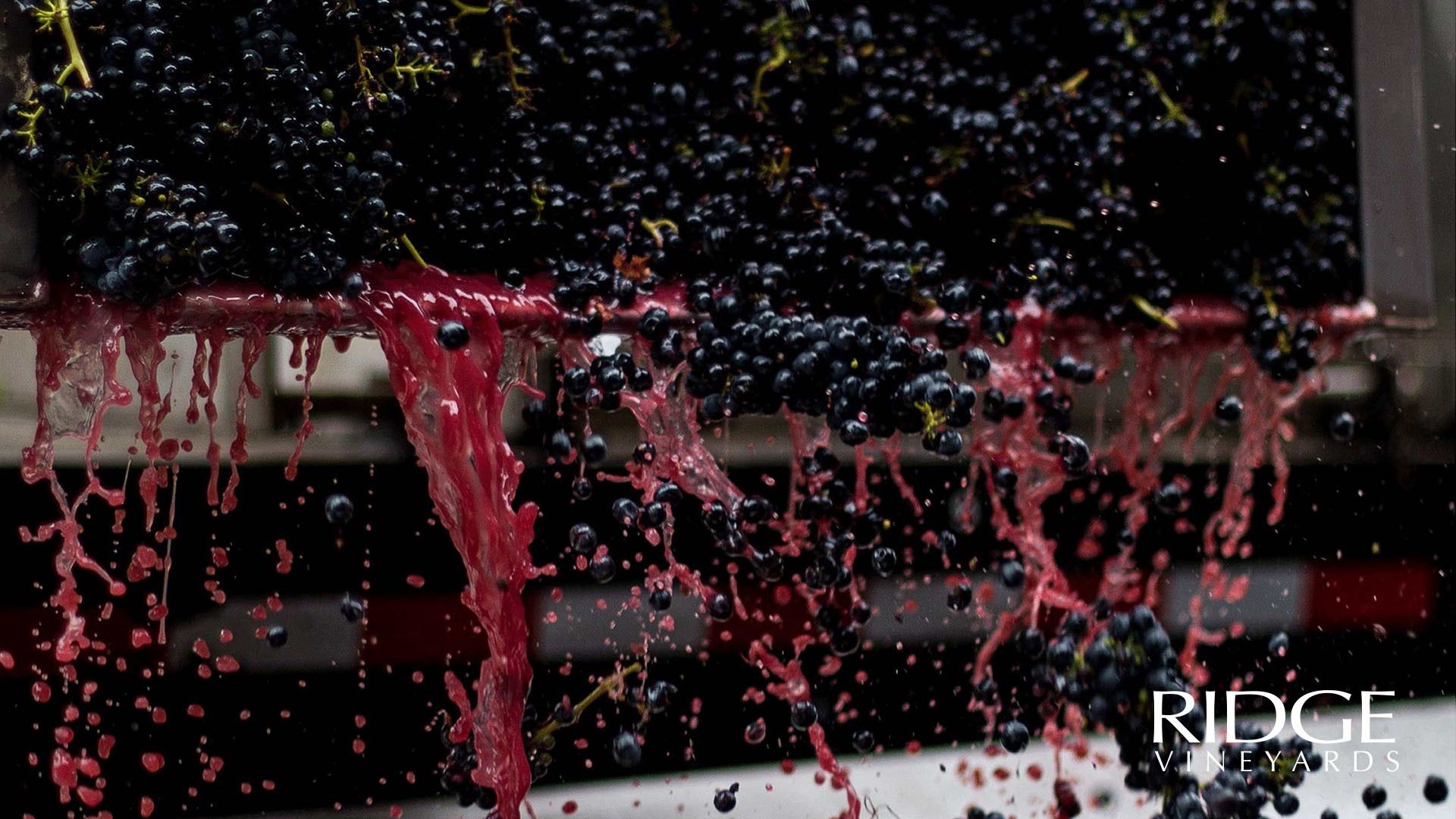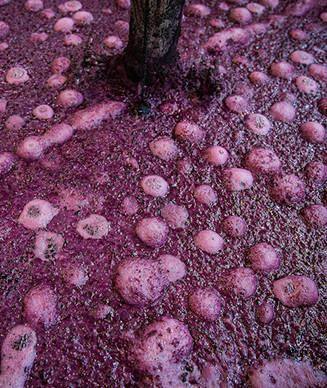Native Yeast Fermentation
Blog Post
August 2022



Ridge has used native yeast fermentations since our founding in 1962. This fermentation approach involves using the natural yeasts that come in with the grapes at harvest to ferment the sugars within the grapes into alcohol. This approach is a cornerstone of our pre-industrial winemaking philosophy, producing wines with added complexity and uniqueness. Ridge Chairman, Paul Draper, discusses the importance of native yeast fermentation.
Why Native Yeast?
“Unlike any other non-distilled alcoholic beverage, wine is made from grapes; in the grape, fully mature, all the elements are present to naturally change it into wine. With wine, you have the cluster of grapes growing in the vineyard. If picked and put into a receptacle and broken or allowed to just deteriorate enough so that they break themselves, the yeast on those skins then attack the sugar in the juice. Without any assistance from man, wine is made. In the grape are all the elements needed to make wine. That’s the reason why it’s the symbol of transformation. You have this simple but delicious fruit that, through a natural process, becomes something as exotic, stimulating, and incredible as a glass of wine.
“Why would I stick with natural yeasts? It gives meaning to what I’m doing. I’m not in the driver’s seat; there is a natural process going on here that I can assist by choosing the vineyards, by watching over the wines, applying my experience and my team’s experience to how we handle the wines. But the wines in a sense make themselves. That’s far more interesting to me than simply producing another commodity.”
How do Native Yeasts Work?
“With wine, you have the cluster of grapes growing in the vineyard. In the grape itself the balance of sugar and acid is such that there is sufficient sugar to form alcohol to a level that will make a stable, sound beverage in which pathogens cannot grow. Also there is enough natural acid to give that beverage liveliness and interest. On the outside is a dusty coating that, let’s say, Mother Nature put there for a purpose. You can polish that coating off and make the grape nice and shiny. That coating is called the bloom. As the winds blow through the vineyard, stirring up the natural yeasts from wherever it is that they reproduce in nature — on wood, on the soil, on decomposed fruit — those yeasts stick to the bloom on the grapes. If picked and put into a receptacle and broken or allowed to just deteriorate enough so that they break themselves, the yeast on those skins then attack the sugar in the juice. Without any assistance from man, wine is made.”
More Talk on Native Yeasts
To learn more about Ridge’s use of native yeasts and our approach to fermentation, enjoy the following videos with additional insights from our winemaking team.
Learn more about Ridge’s winemaking approach.
Wait!
In order to qualify for user related discounts, you must log in before proceeding with checkout. Click the button below to log in and receive these benefits, or close the window to continue.
Log In